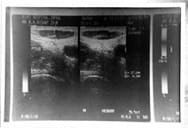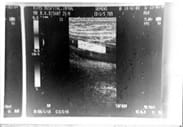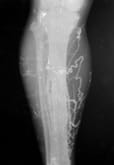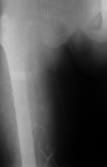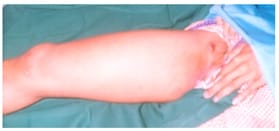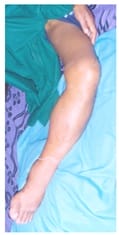Deep venous thrombosis induced by intravenous thrombogenic drugs
Chito Singh T.1, Chinglensana L.2*, kumar Singh Salam S.3, Priyabarta Singh Y.4, Mackson N.5
DOI: https://doi.org/10.17511/ijmrr.2020.i01.13
1 Thokchom Chito Singh, Associate Professor (CTVS), Department of Surgery, Regional Institute of Medical Sciences, Imphal, Manipur, India.
2* Laitonjam Chinglensana, Assistant Professor, Department of Surgery, Regional Institute of Medical Sciences, Imphal, Manipur, India.
3 Sunil kumar Singh Salam, Assistant Professor, Department of Surgery, Regional Institute of Medical Sciences, Imphal, Manipur, India.
4 Yumnam Priyabarta Singh, Assistant Professor, Department of Surgery, Regional Institute of Medical Sciences, Imphal, Manipur, India.
5 Nongmaithem Mackson, Senior Resident, Department of Surgery, Regional Institute of Medical Sciences, Imphal, Manipur, India.
Background: Deep vein thrombosis (DVT) is a major preventable cause of morbidity and mortality worldwide with the potential to cause dreaded pulmonary embolism (PE). Disease and patient-specific considerations are preferably incorporated into therapeutic options for effective management. Materials and methods: Sixty-eight cases of acute deep vein thrombosis were treated within a period of 3 years from January 2016. All the cases were subjected to routine investigations with the Doppler study of the affected limb. Low molecular weight heparin (dalteparin) was administered in all the cases for a period of 15 days and Doppler study was repeated at the end of the drug therapy. After the course of low molecular weight heparin, the patients were given acenocoumarol 2mg daily. Estimation of partial thromboplastin time and prothrombin time were performed before starting and during the treatment of the low molecular weight heparin and acenocoumarol regularly. Venogram was done only when the repeated Doppler study revealed unsatisfactory response to low molecular weight heparin therapy. Eight cases underwent thrombectomy and postoperative period was uneventful. Results: Age group of 21-30 years was most affected (80.8%) with right lower limb being the commonest affected site of injection and associated lesions. Conclusion: DVT in young population remains a challenge to the evaluating clinician. A variety of disease states can alter the anticoagulant factors. Urgent diagnosis and appropriate intervention carries paramount importance.
Keywords: Venous thrombosis, Prothrombin time, Thrombophlebitis, Intravenous drug user
| Corresponding Author | How to Cite this Article | To Browse |
|---|---|---|
| , Assistant Professor, Department of Surgery, Regional Institute of Medical Sciences, Imphal, Manipur, India. Email: |
Singh TC, Chinglensana L, Salam SKS, Singh YP, Mackson N. Deep venous thrombosis induced by intravenous thrombogenic drugs. Int J Med Res Rev. 2020;8(1):86-91. Available From https://ijmrr.medresearch.in/index.php/ijmrr/article/view/1129 |


 ©
© 